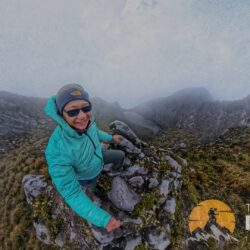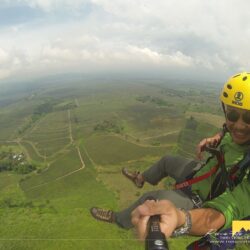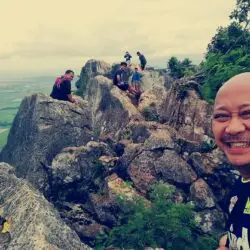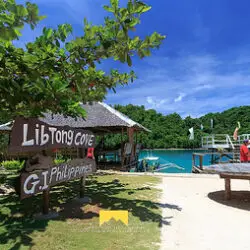“Penek Busay this weekend. You in?”
The ad popped up in my feed three days ago, and I swear my knees twinged in response. Not pain exactly—more like muscle memory wrapped in scar tissue and eighteen years of stories I’ve told about that trek.
My thumb hovered over the keyboard.
In 2007, I bled all over those waterfalls. Two gaping lacerations, one on each knee. I “ductaped” bandages to each of my knees and with my friends help and sheer will power, kept climbing because turning back seemed harder than pushing forward. At the camp, I stitched my knee lacerations and collapsed to sleep after. I’ve dined out on that story at dinner parties, used it in blog posts, even pulled it out during job interviews when they asked about “overcoming challenges.”
But I’ve never gone back. Not even after the nine (9) iterations of well organized, annual Penek Busay since then.
“I’m in,” I typed before I could overthink it.
Now it’s Friday night, 48 hours later, and I’m sitting on my bedroom floor surrounded by gear, wondering what the hell I’ve agreed to and why my heart is pounding like I’m already on the trail.
It Started With Better River Trekking Shoes.
Friday afternoon, I did something that would’ve made my 2007 self laugh: I went to an outdoor shop to buy river trekking shoes.
The salesperson was maybe twenty-three, enthusiastic in that way young outdoor types are when they haven’t been humbled by a mountain yet.
“What kind of terrain?” she asked.
“River trek. Boulder scrambles. Waterfalls. Slippery rocks that want you dead,” I said.
She laughed. I didn’t.
“Oh, trekking shoes that should prevent me from tripping over roots and falling face-first into sharp rocks, splitting both knees open and bleeding profusely while trying to maintain consciousness.”
She stopped laughing. “That’s… specific.”
“It’s called experience,” I said, trying on a pair.
I walked out with shoes that cost more than my entire 2007 pack weighed, plus knee compression sleeves, blister prevention tape, and fresh duct tapes for my first-aid kit that could handle minor surgery. The cashier looked at my haul and asked if I was preparing for a difficult climb.
“Sort of,” I said. “I’m going back to finish a conversation I started eighteen years ago.”
The Thing Nobody Tells You About Trauma Trails
Here’s what they don’t mention in those inspirational “I conquered my fears” posts: some places live in your body forever.
I can’t look at river rocks without my knees remembering. Can’t pack for a hike without triple-checking my first-aid supplies. Can’t hear about someone else’s trekking accident without my chest getting tight.
Penek Busay isn’t just a trail I completed—it’s a bookmark in my nervous system.
For twelve years, I’ve told the story as a triumph. And it was. But it was also traumatic in ways I didn’t have language for back then. The shock, the pain, the moment when I looked down and saw my own kneecaps through gaping wounds and thought, This is how I die, isn’t it? Bleeding out on a mountain while chasing waterfalls I can’t even name.
I didn’t die. Obviously. But part of me stayed there on those rocks, and I’m finally going back to collect it.
Wednesday night, I was staring at my old blog post from 2007, the one where I described the fall.
“You okay?” my climb buddy from years back asks. He was with us on that fateful climb. I invited him if he could join us again this time. He wasn’t sure.
“Just remembering what it felt like to be that scared and that determined at the same time,” I say.
He followed. “And now?”
“Now I’m just determined. And maybe a little bit curious about who I’ll be when I see those waterfalls again.”
What I’m Actually Packing This Time
Thursday afternoon inventory spread across my living room:
Physical gear:
- River trekking shoes with ankle support socks (tested on my practice hikes)
- Knee compression sleeves (because those scars aren’t just decoration)
- First-aid kit that includes: forceps, hemostatic gauze, bandages, sterile sutures (yes, I’m serious), pain medication, anti-inflammatory meds, and enough supplies to patch up three people
- Trekking poles (ego died somewhere around age thirty-five; I’ll use the damn poles)
- Dry bag with backup clothes
- Water purification tablets
- Emergency shelter/blanket/tents
- Headlamp with extra batteries
- Proper quick-dry everything
The stuff that matters more:
- Waterproof journal with the questions I wrote down for specific trail locations
- Two pens (because one always dies when you need it most)
- Printed copy of my 2007 blog post (Serious. I want to read it at the campsite)
- A small stone from a different mountain I love (I’m leaving it at Penek Busay—a gift for letting me return)
- Photos of who I was in 2007 vs. now (sometimes you need visual proof you’ve changed)
My friends Chris and JP—yes, the same Chris from the original TAMAC crew—chatted Thursday evening.
“You’re really doing this?” he asks.
“I’m really doing this.”
“You know it’s just a trail, right? It’s not going to, like, give you mystical answers or anything.”
“I know,” I say. “But I need to see it again. Need to walk it with the person I am now, not the person I was.”
Long pause. Then: “I get it. You needed company?Sir Joy might be available. Or, our friends from Digos Active Mountaineers will be there for you.”
I think about it. In 2007, this same crew saved me. They stayed when I fell, helped me to camp, guarded me on the trail. I couldn’t have finished without them.
“Yeah this time, I’ll make sure they ‘re there” I say. “But thank you. This one’s just between me and the mountain.”
The Questions I’m Carrying
Thursday night, I write out eight questions on paper and placed it on my ziplocked bag. Each one corresponds to a specific place on the trail I remember:
At the first shallow crossing where we started so gleefully: What am I crossing over from my past self? What am I stepping into?
At the chest-deep section where we had to hold our bags over our heads: What am I willing to get in over my head for these days? Has my answer changed?
At Magkasilin Falls with its idyllic lagoon: When did I last allow myself to receive beauty without thinking I had to earn it first?
At the boulder climb that required bare hands and blind faith: What load am I carrying up this mountain that isn’t mine to carry? Can I set it down here?
At the place where I fell (if I can find it): What does real, embodied forgiveness feel like? Can I forgive myself for not being invincible?
At the campsite where strangers helped pitch my tent: Who helped me become who I am today? Have I thanked them properly?
At the 80-degree vertical climb where I used all five extremities including my chin: Am I climbing toward something or running away from something? Does it matter which?
At the summit with its 360-degree view: Looking back at the path I traveled today, what would I tell myself at the beginning of this journey?
These aren’t Instagram caption material. These are real questions for a real reckoning.
What I’m Actually Afraid Of
Let’s get honest, because that’s the entire point of Trail and Frame—the journey inward requires truth-telling.
Fear #1: It won’t be as hard as I remember.
What if the trail that broke me turns out to be… manageable? What if I walk it easily, barely breathing hard, wondering what all the fuss was about? Does that mean I’ve been exaggerating this story for eighteen years? Does that mean the trauma I carried was inflated, unearned, performative?
Fear #2: It will be harder than I remember.
I’m eighteen years older. I carry different weight—literally and metaphorically. What if my body can’t do what it did then? What if I have to turn back? What if some twenty-something passes me on the trail like I’m standing still and I have to face the reality that my peak outdoor years are behind me?
Fear #3: I won’t feel anything.
This is the one that keeps me up Thursday night. What if I wade through those rivers, climb those boulders, stand at the place where I fell… and feel nothing? What if the mountain that shaped me no longer speaks to me? What if I’ve outgrown Penek Busay and this whole pilgrimage is just middle-aged nostalgia dressed up as growth?
Fear #4: I’ll feel too much.
What if standing at that boulder cracks me open? What if the tears come and won’t stop? What if I’ve been holding twelve years of unprocessed trauma in my knees and the moment I return to the scene, it all floods out?
What if I’m not ready for what this mountain has to show me about myself?
I write all four fears in my journal. Naming them doesn’t shrink them, but it makes them visible. And visible things are easier to carry up mountains.
Friday: The Pre-Trek Rituals
I wake up Friday knowing I won’t sleep well tonight, so I try to take care of my body while I can.
Morning: Gentle stretches focusing on hip and knee mobility. My body remembers this—the pre-adventure preparation. It feels good to honor it this time instead of rushing.
Afternoon: I ran my usual route before a slated conference. Forty five minutes, no elevation gain, nothing crazy. I’m testing my knees, my gear, my mental state.
At the turning point of my run, I slowed, drank water and think about Penek Busay. Somewhere out there, those half a dozen waterfalls are flowing whether I’m there or not. The boulders don’t care that I’m coming back. The trail isn’t holding its breath.
But I am.
Evening: I ate a proper meal— protein, vegetables—and eat slowly. Hydration starts now, not on the trail. I drink water with electrolytes. I check my pack for the third time.
I fussed over gear placement.
“You know you’re going to be fine, right?” I said to myself.
“Define fine,” I wanted to debate myself.
“You’ll survive. You’ll come home. You’ll write about it.”
“What if survival isn’t enough anymore?” I ask again myself. “What if I need to actually thrive this time?”
“Then, I may have to figure out what thriving looks like on that half a dozen waterfalls”…
The Story I’ve Been Telling vs. The Story I’m Living
Friday night, I pull up my 2007 blog post and read it like it’s someone else’s diary.
“My sandal got tangled on a root part that blocked our way and I tripped falling towards a sharp rocky floor!”
I remember writing those words, still in pain, knees barely flexing. I remember the urgency to document everything before the trauma faded into comfortable memory.
But here’s what I didn’t write, what I couldn’t write then:
I was terrified I’d ruined my knees permanently. Terrified I’d never climb again. Terrified that my one defining outdoor achievement would be “that time I hurt myself and had to be helped off a mountain.”
I didn’t write about the nightmares I had for months after—falling, always falling, waking up with my legs twitching. Didn’t write about how I’d touch my knee scars in the shower and feel both proud and haunted.
Didn’t write about how that fall changed my relationship with risk, with my body, with the outdoors entirely.
For eighteen years, I’ve told the heroic version: I fell, I bled, I kept going, I won.
But the truer version is: I fell, I bled, I survived, and I’ve been processing what that means ever since.
Tomorrow, I’m going back to write the next chapter.
Not the heroic one. The honest one.
What Success Actually Looks Like This Time
In 2007, success meant finishing despite the injury. Pushing through pain. Refusing rescue. Making it to the summit and back to the jump-off point.
Success was measured in endurance and ego.
In 2025, I’m defining success differently:
Success is being fully present at each waterfall, not just counting them.
Success is listening to my body and honoring what it tells me—even if that means turning back.
Success is feeling whatever comes up—fear, joy, grief, gratitude—without judgment.
Success is taking the photo that matters, not the one that performs well on social media.
Success is asking those eight questions and sitting with uncomfortable answers.
Success is coming home different than when I left, even if I can’t articulate how.
Success is knowing I showed up for the conversation, even if the mountain stays silent.
I write this new definition of success in the front of my journal so I’ll see it first thing tomorrow.
The 5:30 AM Alarm
It goes off Saturday morning way too early, just like it did in 2007.
But this time, I’m not a zombie. I’m someone who chose this, prepared for this, and is ready for whatever this day brings.
I make coffee in the dark. Check my pack one final time—first aid kit right on top where I can grab it fast. Knee sleeves already on. Shoes laced perfectly.
I send a message to the group: “Just waiting for our friend Maya then will be on our way to the meeting point. See you guys soon.”
Then I add, just to myself in my journal: “I’m ready. Not because I’m fearless. Not because I’m fully healed. But because showing up is the only way forward.”
Outside, the world is still dark. Somewhere out there, Penek Busay is waiting with its half dozen waterfalls, its treacherous boulders, its sharp rocks that remember my blood.
And I’m going back.
Not to conquer. Not to prove anything. Not to perform transformation for an audience.
I’m going back to place my hand on that rock where I fell and say thank you. Thank you for showing me what I’m made of. Thank you for the scars that remind me I’m stronger than I knew. Thank you for living in my body for eighteen years, teaching me to respect both my limits and my capacity to transcend them.
I’m going back to find out who I am when I stand in the place that unmade me, now that I’ve spent eighteen years putting myself back together.
The Drive to the Meeting Point
The roads were not busy enroute to the meeting point. We’re late for the jump off but was well assured our ever dependable mountain guide friend Allen is staying with us. With Maya resting after a long travel, I’m alone with my thoughts and a carefully curated playlist that includes “Puff the Magic Dragon”—Sir Joy’s trail anthem from 2007.
I think about that younger version of me who rush-packed at 9 PM, who underestimated everything, who paid for that overconfidence in blood and trauma.
I don’t wish I could go back and warn them. That fall was necessary. Those wounds taught lessons I needed to learn.
But I do wish I could tell them: “You’re going to be okay. More than okay. That moment when you think you might not make it? You do. You make it all the way to eighteen years later, driving back to the same mountain, stronger and wiser and grateful for every scar.”
At a red light, I look at my knees. The scars are visible even through my trekking pants—two white lines that map a story of pain and persistence.
“Let’s go finish this,” I say to them, to myself, to the mountain I’m driving toward.
The light turns green. I press the accelerator.
At the Meeting Point: 10:00 AM
I pull into Napan Elementary School and see the familiar face of mountaineers gathering. Climbing gears, packs being adjusted, that particular energy of people about to do something difficult and exhilarating.
I recognize some faces from previous climbs. Some recognize me too.
“Doc! You’re back for Penek Busay?” Pyol said.
“Been eighteen years,” I say. “Figured it was time.”
“You remember it being this early?” Joel jokes.
“I remember everything,” I say quietly.
What I don’t say: I remember exactly how the rock felt when my knees hit it. I remember the silence that followed my fall, the way the world went mute except for my own heartbeat. I remember the metallic taste of shock. I remember Sir Joy’s hand on my shoulder, steady when I wasn’t. I remember strangers becoming family through shared crisis.
I remember all of it, and I’m carrying all of it up that mountain today.
Joel talked to us for a short briefing. Due to unforeseen circumstances, instead of an overnight trek, we will be river trekking these falls then head back after the last one- Makasilin Falls. My heart jumped a bit. That will definitely make this trek a bit harder for sure. But I completely trust and is confident of Digos Active Mountaineers. They’ve been organizing and hosting amazing climbs since decades back, there’s a much better reason for this I guess.
Joel added guidance about safety and staying together and respecting the trail. I hear it differently this time. Every warning about slippery rocks lands in my body like a memory.
“Any first-timers?” Allen asks.
Hands go up. Young faces, excited and nervous.
“Any returning climbers?” Joel jokes.
I sheepishly raised my hand.
“Welcome back,” says Joel, and I feel it like a benediction.
The Short Ride to the Jump-Off
We drove to jump off—not a dump truck this time, but my pick up. I choose a spot near the back where I can see the road disappearing behind us.
Two young ladies ahead of us is vibrating with excitement. “First time on Penek Busay,” she says. “You?”
“Second,” I say. “First time was 2007.”
“What made you come back?”
I think about how to answer that. Because some mountains don’t let you go. Because I need to know if I’ve healed or just scabbed over. Because unfinished conversations haunt me. Because I’m tired of telling the story and ready to continue it.
“Unfinished business,” I finally say.
She nods like he understands, but she can’t. Not yet. Maybe she will after today. Maybe this will be the trek that marks them, too.
I slowly drove towards the jump off, parked my pickup . The same route. The same destination. But I’m a different person traveling it.
I placed my day hike river trekking gears to my light carry backpack.
I pull out my journal and write: 10:30 AM. Almost at the jump-off. Heart rate elevated but steady. Knees feel strong. Mind is clear. Ready for whatever comes next.
Standing at the Trail Head
10:30 AM. We’re gathered at the starting point, the same spot where I stood eighteen years ago not knowing I’d bleed all over this mountain before the day ended.
Allen gives final instructions. Check your buddy. Stay hydrated. Respect the river. Watch for slippery rocks.
Especially watch for slippery rocks.
I tighten my pack straps. Check my trekking poles. Take three deep breaths.
The group starts moving, and I let them go ahead. I need a moment here, at the threshold.
I pull out that stone I brought from another mountain—a small smooth rock from a trail I completed without incident. I hold it in my palm and close my eyes.
“Thank you for letting me return,” I say quietly to Penek Busay, to the mountain spirit, to whatever force governs waterfalls and mercy. “I’m here to listen. I’m here to learn. I’m here to finish what we started.”
I slip the stone into my pocket. I’ll leave it somewhere meaningful on the trail—a gift, a marker, a promise kept.
Then I take the first step onto the trail.
And just like that, I’m back.
What Happens Next: The Real-Time Journey
I’m writing this final section at 10:30 AM Saturday morning, about to put my phone away and become fully present on the trail.
The rest of this story hasn’t happened yet.
I don’t know if I’ll find the exact boulder where I fell. Don’t know if I’ll cry, laugh, or feel nothing at all. Don’t know if the trail will feel like an old friend or a stranger.
But I’ll tell you this: whatever happens today, I’m ready for it.
Not because I’m no longer afraid. Not because I’ve transcended my trauma. Not because I’m some enlightened version of myself who’s figured it all out.
I’m ready because I finally understand what that 2007 trek taught me:
Readiness isn’t about having answers. It’s about showing up with questions and trusting yourself to handle what comes next.
So here I go. Back to the half a dozen waterfalls. Back to the crystal pools and treacherous climbs. Back to the place where I learned that falling isn’t failure if you choose to stand back up.
To be continued after the trek…
Follow the journey in real-time: I’m documenting this return trek with photos and short updates on FB [@trailandframe] using #PenekBusayReturn and #EighteenYearsLater. Not the polished version—the honest, in-the-moment truth.
For everyone who’s ever needed to go back:
Maybe your mountain isn’t literal. Maybe it’s a relationship that ended badly, a job you left under difficult circumstances, a version of yourself you’re afraid to face.
Whatever your Penek Busay is, I want you to know: returning isn’t weakness. It’s one of the bravest things you can do.
And you don’t need to be healed to go back. You just need to be willing to see what healing actually looks like.
Tell me your story: Have you ever returned to a place where something difficult happened? What did you learn? What would you tell someone who’s afraid to go back? Share in the comments—your experience might be exactly what someone else needs to hear today.
Update: Check back Friday for Part 2: “What the Mountain Said When I Returned”—the full story of what happened on the trail, complete with photos, reflections, and the answers to those eight questions.
Until then, I’m on the mountain. Wish me presence, if not luck.
See you on the other side of the waterfalls.
— Written at the trail head, Sitio Napan, Barangay Goma, Digos City. October 2025. Heart pounding. Knees strong. Spirit ready.
Practical Guide for Your Own Penek Busay Trek:
Difficulty Level: Advanced (not for beginners)
What to Bring:
- Comprehensive first-aid kit (seriously, this isn’t optional)
- Proper footwear with excellent grip
- Trekking poles for stability
- Waterproof bag for electronics
- Extra clothes in dry bags
- More water than you think you need
- Sun protection and insect repellent
- Headlamp (parts of the trail can be dark even during day)
Best Time: Dry season (December-May) for safer river crossings
Fitness Level Required: High—expect boulder scrambling, river crossings, and sustained elevation gain
Guided Trek Recommended: Yes, always trek with local guides who know the current trail conditions
Contact: Digos Active Mountaineers or Digos City Tourism Office for current information
Safety note: River treks can be dangerous, especially during or after rain. Always check weather conditions and never underestimate the trail, no matter how experienced you are. Trust me on this one.
















